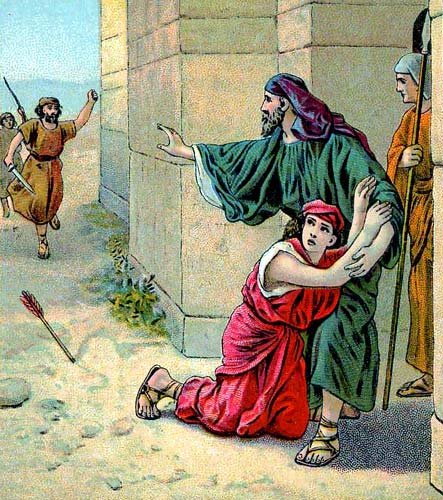|
Merarites
The Merarites were one of the four main divisions among the Levites in Biblical times. The Bible claims that the Merarites were all descended from the eponymous Merari, a son of Levi, although some biblical scholars regard this as a postdictional metaphor, providing an origin myth of the connectedness of the clan to others in the Israelite confederation;.''Jewish Encyclopedia'' The Bible ascribes a specific religious function to the Merarites, namely care of the framework - posts, crossbars, courtyard, tent pegs, etc. - of the sanctuary. This differentiation of religious activity between the Merarites and other Levites, in particular the Aaronids, is found only in the Priestly Code, and not in passages that textual scholars attribute to other authors. According to the Book of Joshua, rather than possessing a continuous territory, the Merarites possessed several cities scattered throughout the geographic region of Gilead, as well as in the south of the Galilee, the latter bein ... [...More Info...] [...Related Items...] OR: [Wikipedia] [Google] [Baidu] |
Levitical City
In the Hebrew Bible, the Levitical cities were 48 cities in ancient Israel set aside for the tribe of Levi, who were not allocated their own territorial land when the Israelites entered the Promised Land. Numbers 35:1-8 relates God's command to Moses to establish 48 cities for the Levites, of which six would also function as Cities of Refuge to which manslayers could flee. Each settlement was to comprise a walled city and the common land around it for pasture, measured radially as one thousand cubits in each direction, or as a square measuring two thousand cubits along each side. The land for the cities was to be 'donated' by the host tribe and was allocated to the Levites according to their tribal sub-divisions. 13 cities were for the Aaronites. 13 cities were for the Gershonites. 10 cities were for the Kohathites. 12 cities were for the Merarites. The six cities which were to be Cities of Refuge were Golan, Ramoth, and Bezer, on the east of the Jordan River, and Kedesh, ... [...More Info...] [...Related Items...] OR: [Wikipedia] [Google] [Baidu] |
Merari
According to the Torah, Merari (Hebrew: , ''Mərārî'') was one of the sons of Levi, and the patriarchal founder of the Merarites, one of the four main divisions among the Levites in Biblical times. The Hebrew word ''Merari'' means ''sad'', ''bitter'' or ''strong'' (in the sense that a dish with a bitter taste might be said to have a "strong" taste). The Merarites were charged with the transportation and care of the structural components of the tabernacle. Richard Elliott Friedman attributes the genealogy to the Book of Generations, a document originating from a similar religiopolitical group and date to the priestly source. According to some biblical scholars, the Torah's genealogy for Levi's descendants is actually an aetiological myth reflecting the fact that there were four different groups among the levites - the Gershonites, Kohathites, Merarites, anAaronids according to the Jewish Encyclopedia, ''Levite'' was originally just a job title, deriving from the Minaean word '' ... [...More Info...] [...Related Items...] OR: [Wikipedia] [Google] [Baidu] |
Tel Yokneam
Tel Yokneam, also spelled Yoqne'am or Jokneam ( he, תֵּל יָקְנְעָם), is an archaeological site located in the northern part of the modern city of Yokneam Illit. It was known in Arabic by a variant name, Tell Qamun ( ar, تل قامون), believed to be a corruption of the Hebrew name. The site is an elevated mound, or tel, spanning around 40 dunams (10 acres) and rising steeply to a height of . ''Yoqne'am I'', pp. 1–2 With a few brief interruptions, Yokneam was occupied for 4,000 years, from the Middle Bronze Age to the Ottoman Empire. Ben-Tor, 1987, p. 2 The ancient settlement at Tel Yokneam is first mentioned in Egyptian sources as a city conquered by Pharaoh Thutmose III.Yuval Goren, Israel Finkelstein, and Nadav Na'aman. "Petrographic Investigation of the Amarna Tablets." ''Near Eastern Archaeology'' 65, no. 3 (2002): 202–203. It appears later in the Hebrew Bible as a city defeated by Israelite leader Joshua and settled by the Tribe of Levi.Elizabeth Bloch-Sm ... [...More Info...] [...Related Items...] OR: [Wikipedia] [Google] [Baidu] |
